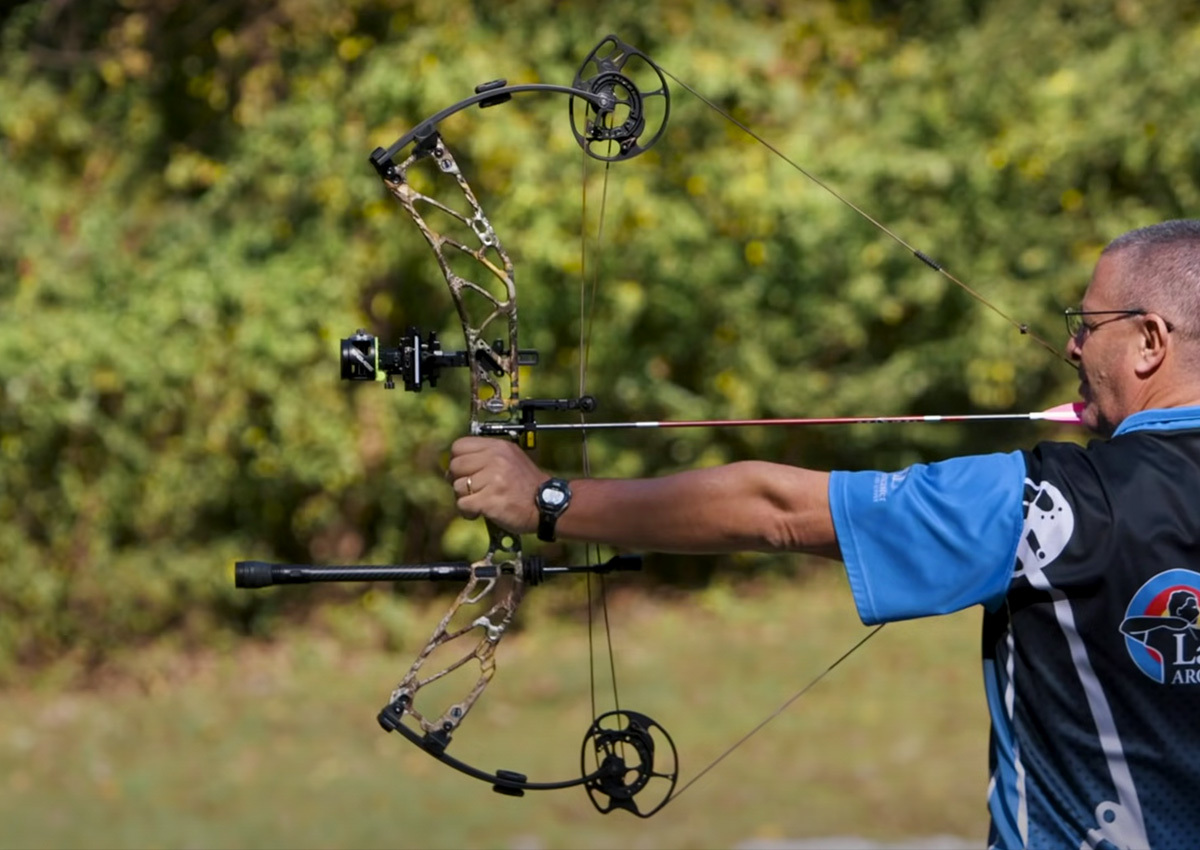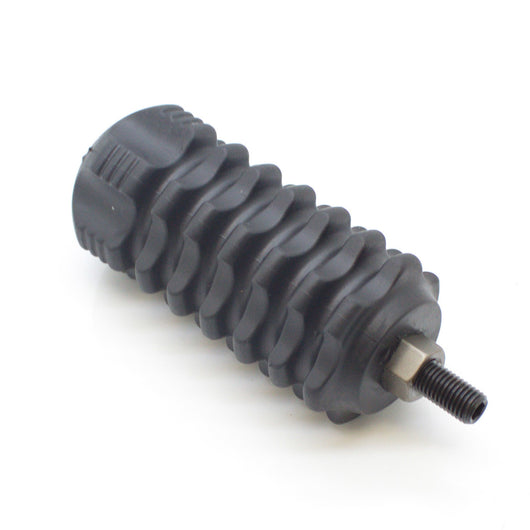Discovering Archery Stabilizers: Discovering the Perfect Fit
Discovering Archery Stabilizers: Discovering the Perfect Fit
Blog Article
Master the Art of Archery: Comprehending the Significance of a Stabilizer in Your Configuration
Whether one is a seasoned archer or simply starting their journey, the value of a stabilizer in their configuration can not be overemphasized. By comprehending the benefits of using a stabilizer, considering the ideal variables when choosing one, and properly mounting and changing it, archers can raise their skills to new heights.
The Function of a Stabilizer in Archery
A stabilizer plays an essential role in archery by boosting balance and reducing resonances throughout the shot. When an archer draws the bowstring and releases it, there is a transfer of power that can trigger the bow to shake. These vibrations can adversely influence the precision of the shot. Nonetheless, a stabilizer aids to counteract these resonances by dissipating the energy and taking in.
One of the major advantages of a stabilizer is its ability to boost equilibrium. When an archer holds a bow, it can be testing to keep a stable purpose. The weight of the stabilizer assists to distribute the weight equally, decreasing the pressure on the archer's arm and enhancing stability. This allows the archer to concentrate on their goal and perform a more precise shot.
In enhancement to equilibrium, a stabilizer additionally aids to reduce torque. When an archer launches the bowstring, there is a natural tendency for the bow to revolve in the hand. This rotation, understood as torque, can cause the arrowhead to divert off-course. The weight and layout of a stabilizer counteract this turning, guaranteeing an extra consistent and accurate shot.
Advantages of Making Use Of a Stabilizer
The utilization of a stabilizer in archery provides countless advantages that enhance an archer's efficiency and general capturing experience. Firstly, a stabilizer helps to decrease the vibrations produced upon release of the arrowhead. These vibrations can create the bow to torque or twist, leading to imprecise shots. By taking in and moistening these resonances, the stabilizer enhances the stability of the bow, enabling more constant and exact shots.
Second of all, a stabilizer helps to balance the bow by including weight to the front end. This weight distribution neutralizes the all-natural tendency of the bow to tip onward upon release, minimizing the quantity of movement and improving the archer's capacity to maintain goal on target.

Lastly, a stabilizer can additionally serve as a shock absorber, reducing the shock and recoil experienced upon launch. This not only boosts the convenience of shooting but also decreases the threat of injury or stress on the archer's body.
How a Stabilizer Improves Precision
Enhancing the accuracy of an archer's shots, a stabilizer plays a vital role in boosting overall performance. archery stabilizer. By including stability to the bow, a stabilizer aids reduce the undesirable motion and vibration that can happen during a shot. This reduction in activity enables the archer to maintain a consistent aim, leading to even more accurate and regular shots

Additionally, a stabilizer aids to wet vibrations that take place upon launch. These resonances can trigger the bow to shake, influencing the arrowhead's trajectory and accuracy. By absorbing and dissipating these resonances, a stabilizer assists to preserve the bow's stability and ensure a smooth and exact shot.
Moreover, a stabilizer can likewise assist in stabilizing the weight distribution of the bow (archery stabilizer). By including weight to the front of the bow, a stabilizer helps to stabilize the weight of accessories, such as sights or quivers, which may be connected to the bow. This balanced weight distribution assists the archer maintain a regulated and steady capturing position, bring about enhanced accuracy
Aspects to Think About When Choosing a Stabilizer
When choosing a stabilizer for your bow, it is important to take into consideration several aspects that will add to its total efficiency and viability for your individual shooting design. The first aspect to consider is the length of the stabilizer. Stabilizers come in different sizes, ranging from short to long. Longer stabilizers usually offer extra stability and balance, yet they can likewise be heavier and a lot more difficult to maneuver. Much shorter stabilizers, on the various other hand, provide far better maneuverability however may sacrifice some stability.
One more element to take into consideration is the weight of the stabilizer. The weight of the stabilizer can influence the equilibrium of your bow.
Additionally, it is essential to consider the design and building and construction of the stabilizer. Some stabilizers have adjustable functions, such as adjustable size or flexible weights, which permit you to customize the stabilizer to your particular requirements. The products used in the building and construction of the stabilizer can also impact its efficiency. Carbon fiber stabilizers are lightweight and sturdy, while aluminum stabilizers use an equilibrium between weight and rigidity.
Various stabilizers may function far better for specific shooting designs, such as target shooting or hunting. browse this site It is a good idea to seek advice from with experienced archers or experts to figure out which stabilizer will certainly best suit your specific requirements.
Tips for Effectively Changing a stabilizer and mounting
Longer stabilizers provide even more stability but can be much less maneuverable, while much shorter stabilizers use enhanced maneuverability but might give up security. Once you have actually picked the appropriate size, connect the stabilizer to the bow making use of the given placing hardware. Guarantee that the stabilizer is firmly attached and lined up with the bow's riser.
After setting go to this website up the stabilizer, it is needed to make changes to attain the wanted balance and shot consistency. Start by changing the weight distribution along the stabilizer. This can be done by including or removing weights from the stabilizer's weight system. Experiment with different weight configurations to discover the equilibrium that functions finest for you. Additionally, consider readjusting the angle of the stabilizer to fine-tune the shot. A minor onward or backward tilt can influence the bow's balance and how it responds throughout the shot.

Final Thought
In final thought, a stabilizer plays a crucial function in archery by improving accuracy and lowering bow torque. When selecting a stabilizer, aspects such as material, size, and weight must be thought about to fulfill individual needs.
Additionally, a stabilizer can additionally aid in balancing the weight circulation of the bow. By adding weight to the front of the bow, a stabilizer aids to balance the weight of accessories, such as views or quivers, which might be attached to the bow. Some stabilizers have adjustable functions, such as adjustable length or flexible weights, which enable you to customize the stabilizer to home your details needs. Carbon fiber stabilizers are light-weight and long lasting, while light weight aluminum stabilizers offer an equilibrium between weight and rigidity.
Longer stabilizers give more stability but can be much less maneuverable, while shorter stabilizers use enhanced maneuverability but might compromise stability.
Report this page